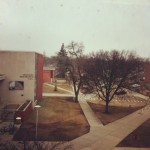![IMG_0631[1]](https://www.tammyevansflute.com/wp-content/uploads/2013/01/IMG_06311-150x150.jpg)
This past weekend, I had the pleasure of attending the Kentucky Flute Festival for the second year in a row. This year included very different events compared to last year, so it was nice to be able to attend and participate in such a different festival. It was also great to catch up with a lot of flute friends who I haven’t seen in a while. I also enjoyed Chick-Fil-A for lunch, which is a southern staple and something I haven’t had in months.
The festival was held at Campbellsville University in Campbellsville, Kentucky (population 9000).
Friday, 18 January featured “Flute Society of Kentucky Flute Olympics,” which is geared towards younger students. I think this is a great way to get beginners involved in the organization and really work on establishing good players early in their musical experience. It included such workshops as “Fun with Scales,” “Name That Tune,” and flute choir reading sessions. The flute choir performed on the last concert of the weekend, so that was a nice way for the students to have some immediate performance experience. I attended a workshop that morning about flute upgrades. It was good to hear what kind of flutes some of the younger elementary, middle, and high school players are using these days. The market has changed very, very quickly, and flutes that wouldn’t have been given a second look years ago are now much more reliable. I don’t teach as many very young students at this point, but I felt it was important to know what kinds of experiences private teachers are having with various flute brands.
On Friday I also judged the final rounds of the Flute Society of Kentucky’s competitions. This was approximately 5.5 hours of flute-playing goodness and included the Junior Soloist, High School Soloist, Collegiate Artist, Young Artist, and Chamber Ensemble competitions. There was a lot of fantastic playing, and I was happy to see that the FSK was able to attract participants from around the country. I had a great time listening to the players and spending some time with my colleagues.
The opening concert that evening featured some very nice works. I was particularly interested in Danza de la Mariposa by Valerie Coleman (of the Imani Winds), as one of my students is currently working on it. There was also a very cool piece called Kembang Suling by Gareth Farr for flute and marimba. Keeping things in mind for future recitals…
Last on the agenda for the evening was a flute choir rehearsal. My friend and colleague Heidi Álvarez (Western Kentucky University) put together a flute choir of applied flute instructors from various institutions. It included Jana Flygstad Pope (Georgetown College), Julie Hobbs (University of Kentucky), Heidi Álvarez (Western Kentucky University), Jennifer Brimson Cooper (Morehead State University), Jessica Dunnavant (Middle Tennessee State University), Kristen Kean (Eastern Kentucky University), and me (South Dakota State University). Dr. Becky Weidman-Winter, from the Little Rock, Arkansas area, filled in for another player who was not able to attend. We performed flute choir music by Kentucky composers Michael Kallstrom and Sonny Burnette, including a world premiere.
Saturday, 19 January started early with another flute choir rehearsal. Then I caught a bit of the master class with the guest artist, Molly Barth. The mid-day concert followed. I particularly enjoyed the Tailleferre Suite performed by flutist Jessica Dunnavant, saxophonist Paula Van Goes, and pianist William Coleman. There was also a very interesting work called Arcana by Elizabeth Brown, performed by Kristen Kean.
Guest artist Molly Barth’s recital was inspiring. As a performer who specializes in new music (and one of the founding members of the chamber ensemble eighth blackbird), she introduced me to many works that were completely new to me, even though I primarily play modern music at this point in my career. I think the biggest lesson I took away from this recital was to be fearless in performance. I might make technical mistakes in a performance (which is not to insinuate that Ms. Barth did!), but if I play without fear, it will be much more powerful. I have this realization every once in a while and then tend to get bogged down in technical passages or mired in the trees, instead of seeing the forest. I’ve had my reminder to really increase the energy of a performance, though, and just in time for my faculty recital on February 25.
Our flute choir performance followed Ms. Barth’s recital, and it went very well.
A second master class with Ms. Barth followed, and featured a very high level of playing across the board. It was a lot of fun to hear students from various universities in the south. Overall, quite a variety of works were included. This was the last event of the festival and was a great way to finish things up.
Unfortunately, I wasn’t able to catch the last flight back to South Dakota on Saturday, so I caught the first one out on Sunday morning, which required me to leave my Campbellsville hotel at 4am. The crazy things we do as travelling musicians…
I look forward to next year’s event, which will take place January 2014 at Western Kentucky University.
![IMG_1286[1]](https://www.tammyevansflute.com/wp-content/uploads/2014/11/IMG_12861-600x448.jpg)
![IMG_1287[1]](https://www.tammyevansflute.com/wp-content/uploads/2014/11/IMG_12871-600x448.jpg)

![IMG_0769[1]](https://www.tammyevansflute.com/wp-content/uploads/2014/05/IMG_07691-e1401484980199-110x110.jpg)

![IMG_0631[1]](https://www.tammyevansflute.com/wp-content/uploads/2013/01/IMG_06311-150x150.jpg)
![IMG_0628[1]](https://www.tammyevansflute.com/wp-content/uploads/2013/01/IMG_06281-150x150.jpg)